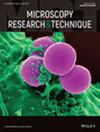The abundance and analytical characterization of microplastics in the surface water of Haryana, India
Abstract
Microplastic (MP) contamination has become a serious environmental concern that affects terrestrial environments, aquatic ecosystems, and human health. The current study assesses the presence, abundance, and morphology of MPs present in the surface water of Rohtak district, Haryana, India, which is rapidly undergoing industrialization. While the morphological studies of MPs were conducted through stereo microscopy and field emission-scanning electron microscopy (FE-SEM), the elemental composition of polymers was analyzed through attenuated total reflectance-Fourier transform infrared (ATR-FTIR). The results revealed that the surface water was significantly contaminated by polyethylene, polypropylene, and polystyrene. Moreover, the abundance of MPs was found to be 16–28 particles/L with an average value of 23 particles/L. Most of the MPs had fibrous morphology with the specifics being, fibers (43.9%), fragments (23.7%), films (17%), and pellets (15.4%). The MPs exhibited a size range of 0.61–4.87 mm, with an average size measured at 2.03 ± 0.04 mm. Also, the MP pollution load index values for the surface water bodies were found to be below 10, indicating a low risk category. Though currently designated as “low risk,” it is important that mitigation strategies be brought over at this juncture to further prevent the deterioration of quality of water. Thus, this study not only intends to bring forth the impact of human activities, industrial waste, open waste dumping, and inadequate municipal waste management practices on increasing MP concentration but also highlights the sustainable alternatives and strategies to address this emerging pollutant in urban water systems. For further prevention, the implementation of stringent regulations and on-site plastic waste segregation is a critical component in preventing the disposal of plastic waste in surface water bodies.
Research Highlights
- The abundance of MPs was found to be 16–28 particles/L, with an average value of 23 particles/L.
- The surface water bodies in Rohtak district fall into the hazard categories of low risk with values less than 10.
- The overall MP concentration in water, across all five areas, based on color was in order: white/transparent (39.1%), black (15%), gray (9.1%), green (8.7%), blue (7.8%), red (7.8%), orange (6.3%), and yellow (6.1%).
- The dominant polymers were polyethylene (PE) (42%) and polypropylene (41%) as determined by FTIR spectroscopy.


 求助内容:
求助内容: 应助结果提醒方式:
应助结果提醒方式:


